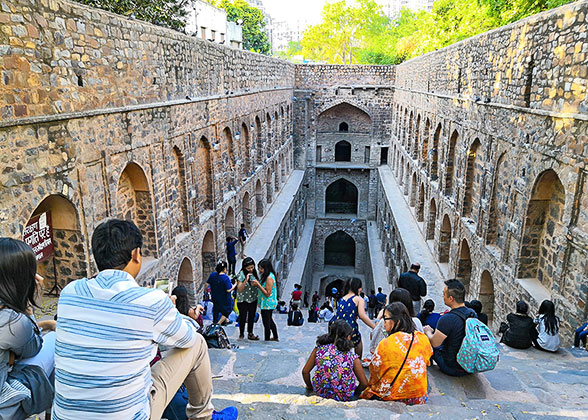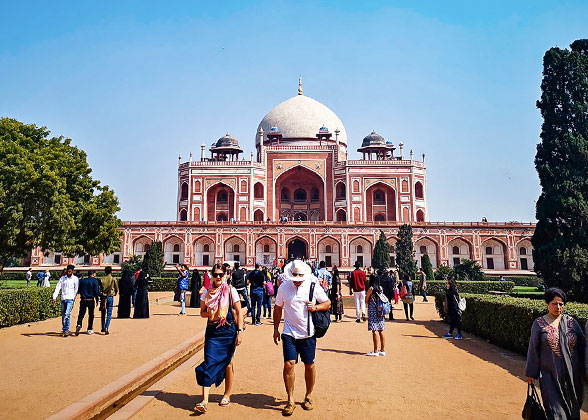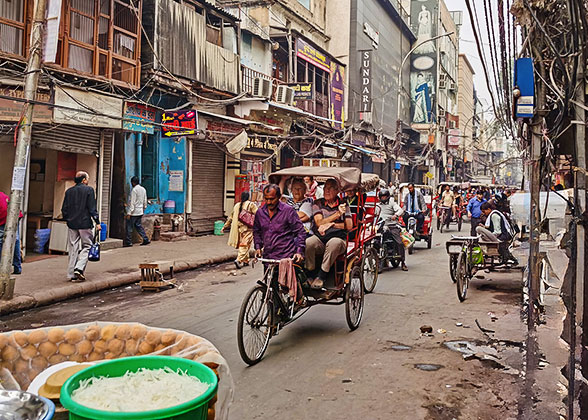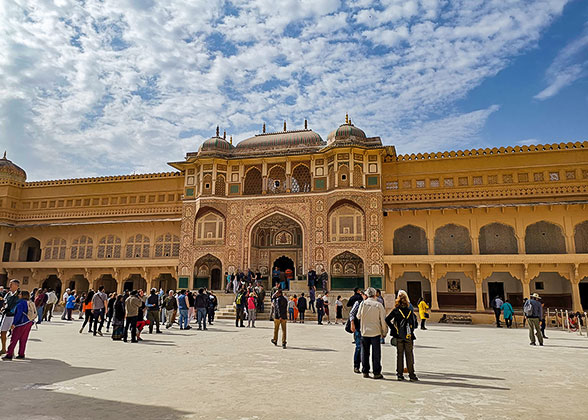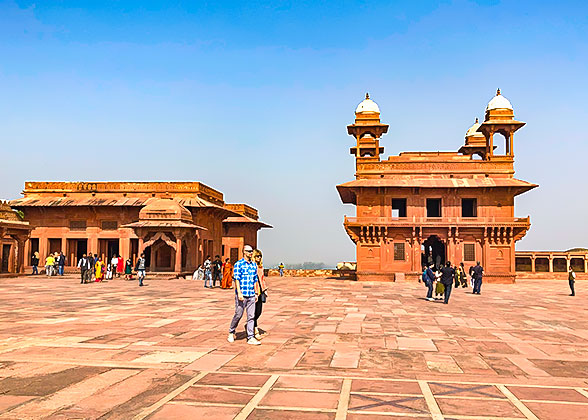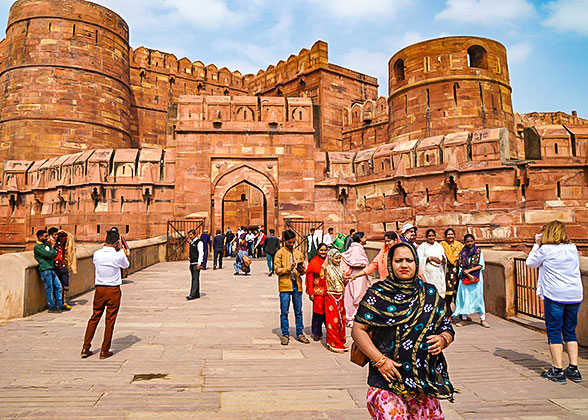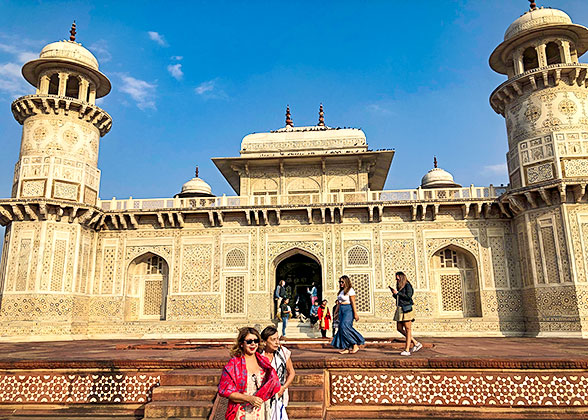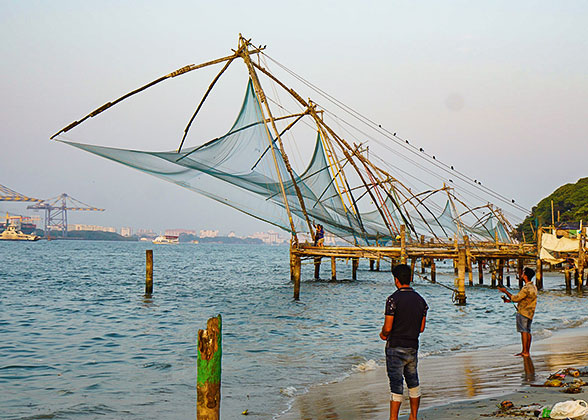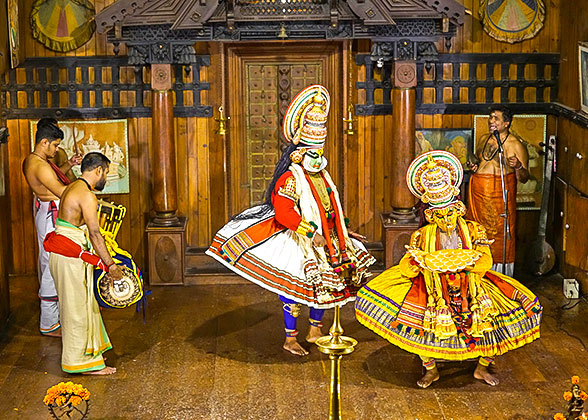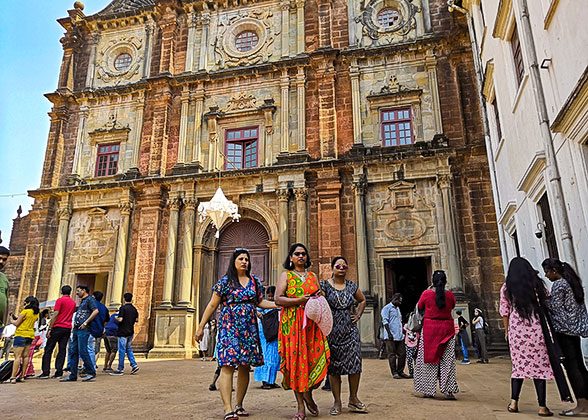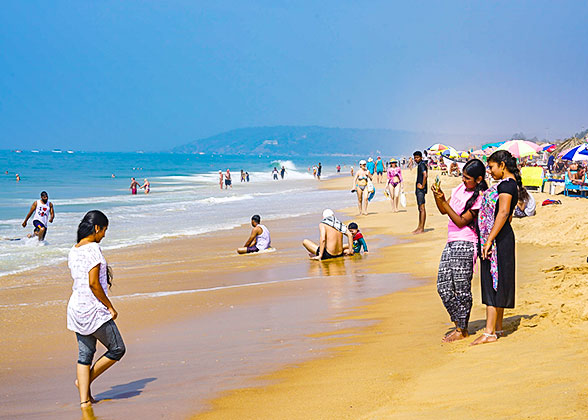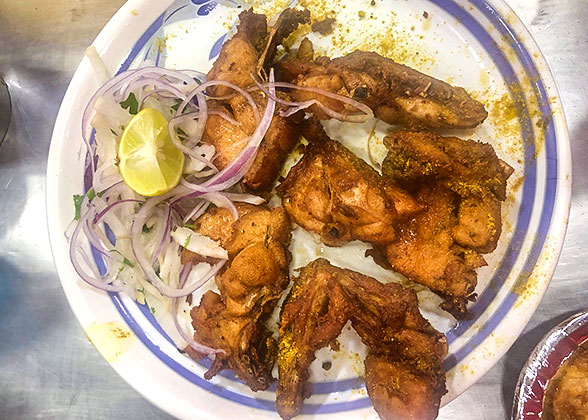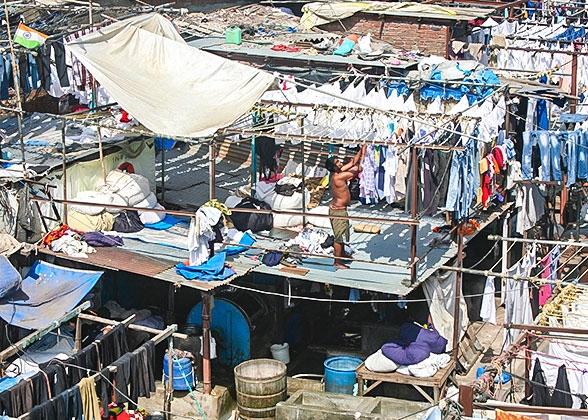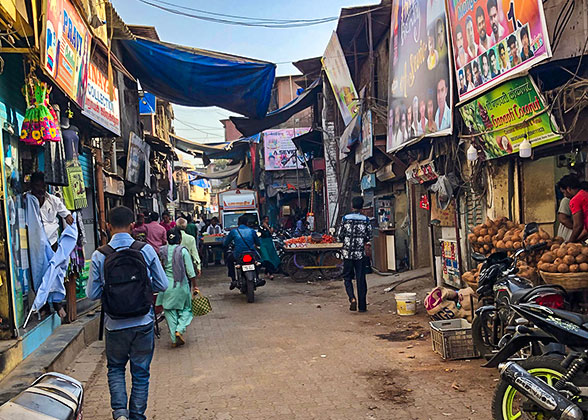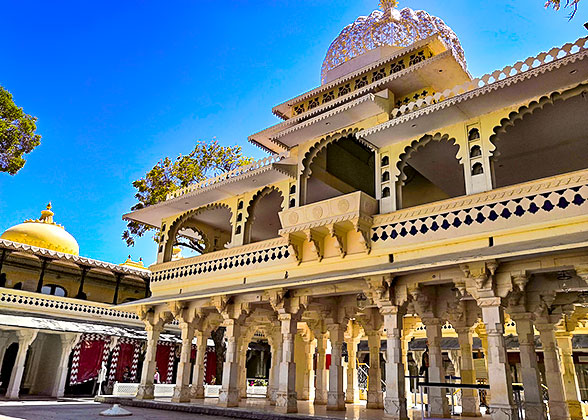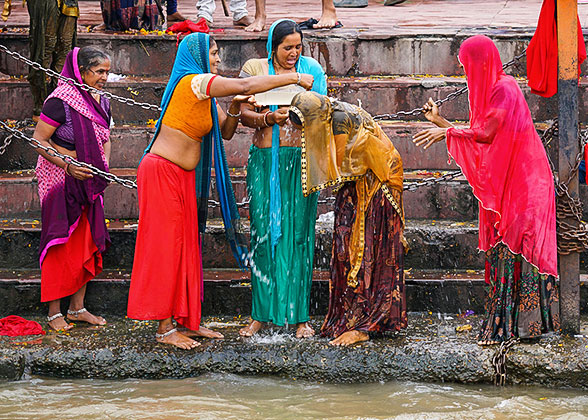Day 1: Arrive in Delhi, Airport Pick-up
Arrival Note: Welcome to join this two-week India tour! Our local representative will wait for you at the arrival hall of the Delhi Airport, holding a sign bearing your name. You will then be escorted to the hotel in downtown Delhi in our well-prepared private car. Activities & Dinner Suggestion: The rest of the day will be at your disposal. Both the 4 and 5-star hotels we have carefully selected for you have good locations, excellent service, and complete facilities including several restaurants. You can rest and have dinner in the hotel, or go out to familiarize yourself with the surroundings. A Hidden Gem in the City - Agrasen Ki Baoli Agrasen Ki Baoli is located near Connaught Square and is a stepped reservoir dating back to the 14th century. Delhi had only three months of rainy season a year, and the locals demonstrated extraordinary wisdom in overcoming the difficulties at that time. The stepped wells could store water during the rainy season, ensuring people had sufficient water for a whole year. It was built a thousand years ago for its value in use, has now been revitalized by the extraordinary architecture. This is a small attraction is surrounded by residential buildings. After getting off the car, passing through an arched circular gate, you will see this magnificent underground project. The rectangular well has appeared in multiple movies and now is popular among young people and tourists. ► How to get there: From Le Meridian hotel, it takes 5 minutes by tuk tuk, and take 20 minutes if you walk there. While from Crowne Plaza Rohini, it takes about one hour by taxi, we suggest you order taxies by Uber or Ola to get unchangeable price. Agrasen Ki Baoli Local Snack Shop
|
Day 2: Old & New Delhi Highlights: Jama Masjid, Qutub Minar, Humayun's Tomb, India Gate
Sightseeing Activities: After breakfast, we will begin our visit to the old and new areas of Delhi, the capital of India. First, the guide will lead you to see the Jama Masjid, the largest mosque in Delhi built in the 17th century. We can climb up its tall minaret, which has a panoramic view of Old Delhi. ★ Special Arrangement: Just outside the mosque is the bustling bazaar Chandni Chowk, where we will prepare a special rickshaw ride for you to go through the alleyways lined with small shops and crowded with local vendors and shoppers. It would be some chaotic, but this is the real Indian life. On the way we’ll pass the Red Fort (drive pass), where you can photograph the magnificent exterior of the fort. In the afternoon, we will admire two UNESCO World Heritage sites – the 72-meter-high (236-foot-high) Qutub Minar, as well as the Humayun's Tomb, known for the red sandstone structure and its combination of Islamic and Hindu styles. Next, we will proceed to the India Gate, built to commemorate the unknown soldiers who died in the First World War. Finally, we’ll drive past the President House and Parliament House, and then reach the Gurudwara Bangla Sahib to visit this Sikh religious site with holy healing waters. Humayun Tomb – the Great Design Inspires the Famous Taj Mahal!The Humayun's Tomb was built in 1570, a grand architecture with a typical Mughal style. When visiting the tomb of the second emperor of the Mughal Empire, you may find that its onion-shaped dome is highly similar to that of the Taj Mahal. In fact, this is the first garden mausoleum in India and in some way, it actually inspires the design of the magnificent Taj Mahal. The Humayun's Tomb features a majestic Persian architectural style, reflecting the grandeur of the powerful Mughal Empire, full of the geometric beauty of Islamic architecture. Its main structure is made of red sandstone, with a square main body and a semicircular onion-shaped dome. The whole building is majestic and magnificent, undoubtedly an architectural masterpiece for India’s and even the whole world's architectural history. Meals: Breakfast
|
Day 3: Drive to Jaipur with Scenic Stops on the Way (260 km; 5 to 6 hours)
After breakfast, we will prepare a private car with chauffeur to serve you a comfortable ride to Jaipur. Upon arrival, you can relax at the hotel or go out by yourself in the free time of the afternoon.
► Tip: The Albert Hall Museum is a good place to go. You can take a tuk-tuk to get there and appreciate the exhibitions of Indian art and artifacts.
Meals: Breakfast
|
Day 4: Explore Jaipur: Amber Fort, Hawa Mahal, Jantar Mantar, Maharaja City Palace
Sightseeing Activities: In the morning, we will first head to the landmark Amber Fort. This magnificent fort, which dates back to 1592, stands atop a hill and guards the Pink City of Jaipur. Our guide will show you some of the key attractions inside, including the Suhag Mandir, Jas Mandir, and the ornate Sheesh Mahal with intricate mirrorwork. Afterwards, we’ll drop by the Jal Mahal for a distant view and take photos of this elegant ‘Water Palace’ in the lake. Next, we will drive back to downtown Jaipur to visit several neighboring sites. First up is the Hawa Mahal, where our experienced guide will show you a panoramic view of its iconic pink facade from the best vantage point across the road. You will be amazed at its ingenious design, which allows the breeze to blow in from more than 900 windows on its facade, keeping the palace well ventilated, which is why it is also known as the Palace of the Winds. Later, we’ll explore the nearby Jantar Mantar, India’s largest observatory, and also the Maharaja City Palace, an opulent 18th-century palace that now serves as a museum and the residence for the current leaders of Jaipur. Dinner Suggestion: Peacock Rooftop Restaurant in JaipurLocated on the rooftop of Hotel Pearl Palace, the restaurant is famous for being themed after the peacock, the national bird of India. It is also dubbed the best rooftop restaurant in Jaipur, serving not only perfect traditional Indian cuisines but also fine Chinese and Italian dishes. The restaurant’s beautiful forest-like decor is also favorable for your private conversation with friends and some groovy Indian live music at night adds a more romantic atmosphere. The restaurant is only 0.4 mile from our ITC Rajputana Luxury Collection Hotel and you can easily walk to reach within 10 minutes. However, if you choose to stay in Four Points by Sheraton, taking a taxi or tuk-tuk is more recommended and about 20 minutes are needed for the 4-mile journey. Meals: Breakfast
|
Day 5: Drive to Agra: Visit Fatehpur Sikri and Chand Baori Enroute
Sightseeing Activities: We are going on a road trip from Jaipur to Agra today. The 246-km journey takes 5 hours without stopping. We’ll visit two interesting places along the way. First, we’ll stop at the Abhaneri Village to see the historic Chand Baori, one of India’s deepest and largest stepwells. After that, we will continue our way east to visit the historic royal city of Fatehpur Sikri, the former capital of the Mughal Empire. Before dark, we will arrive at our hotel in Agra. Why Is the Ghost City Arranged in Our Itinerary? Located in Fatehpur Sikri (Persian for "victory"), this royal city was built by Akbar the Great of the Mughal Empire, along with mosques, hotels, lakes, and other buildings forming together the city center. The Great Akbar ordered to build the city as he got a son after praying to the sage Sheikh Salim Chishti. Fatehpur Sikri, meaning "Victory City", was then constructed and the capital city was also moved here. However, the city served as the capital only for about 14 years and was finally abandoned due to the shortage of water. Agra became the capital city again and this city has also been famous as a “Ghost City” since then. Though an abandoned city, Fatehpur Sikri Fort is a famous UNESCO World Heritage Site, attracting a large number of tourists due to its magnificent structure, exquisite stone carvings, beautiful masjid, and diverse architectural styles of Islam, Hinduism and Christianity. Its grandeur makes it one of the most unmissable highlights in Agra and the red sandstone city is particularly beautiful and suitable for filming at sunset. That’s why we especially include it in our itinerary. Meals: Breakfast Chand Baori Fatehpur Sikri
|
Day 6: Agra Day Tour with Focus on Taj Mahal & Agra Fort
Baby Taj, Agra Today, we will visit Agra’s most important attraction and an Indian icon, the Taj Mahal, an everlasting monument of the love story between Emperor Shah Jahan and his beloved wife Mumtaz Mahal. Afterwards, we will go back to the hotel for breakfast, and then head for the Agra Fort, a majestic red sandstone architecture on the bank of the Yamuna River. Listed as a World Heritage site, the 16th-century fort is well preserved, with double ramparts and richly decorated palaces. The guide will take you to the most attractive sites inside, including the Octagonal Tower, Moti Masjid, and Jehangir’s Palace. Next, we will visit the Tomb of Itimad-Ud-Daulah, also known as the Baby Taj, followed by a stroll in the Mehtab Bagh, which offers the perfect panoramic view of the Taj Mahal. Agra Red Fort VS. Delhi Red FortYou may know that Delhi also has a Red Fort. Then what are the differences and similarities between the two forts? Agra Fort was first ordered to build by Akbar the Great, and its whole construction had experienced several emperors. Featuring a magnificent architectural style, the Agra Fort has a grand city wall measuring about 20 meters (66 ft.) high. The main structure was built of India's most iconic red sand stones, hence it is also known as the Red Fort. Under the sunshine, it looks spectacular and powerful. In the large complex, there are about 500 buildings including palaces, halls, towers, and mosques. The red fort in Delhi could be the replica of the Agra Red Fort. Shah Jahan moved the capital city from Agra to Delhi and the Delhi Red Fort was rebuilt at that time. However, as the financial resources, material resources, and manpower were all slightly inferior to the first two emperors, compared with the Delhi Red Fort, the Agra Fort has a larger structure and is better reserved. So if the condition permits, the Agra Red Fort is more worth visiting. ★ What makes us different:1. Instead of visiting in the morning or afternoon when the Taj Mahal is packed, as other travel agencies do, we will leave before dawn to get inside before the common tourists arrive for a stunning sunrise and a one-of-a-kind experience. 2. In the crowded afternoon, our guide will show you a smart way to the Mentab Bagh, a quiet garden across the Yamuna River from the Taj Mahal that offers the best views of the mausoleum and the sunset. Meals: Breakfast
|
Day 7: Fly to Kochi to Start Tours to South India
According to the flight time, we will arrange a private car with chauffeur to escort you in a 4-hour smooth ride to the Delhi Airport, where you’ll fly to Kochi (Cochin). After a flight of more than three hours, you will arrive in Kochi, the largest city in India’s southwest coastal state Kerala and an important trading port known as the ‘Queen of the Arabian Sea’. Have a rest at the hotel or explore the surroundings by yourself if time permits.
Interesting!Distinguish North and South India from Women's Ornaments
1. Headwear: Women in North India wear Jhumar, which literally means swaying or side. As the name suggests, Jhumar is worn on the side of the hair. While the women from South India wear Suryapirai and Chandrapirai, a pair of sun and moon shaped hair accessories with one on each side.
2. Nose Ring: Female North Indians wear a single large and intricately decorated nose ring, they call it nath, usually hang on the left side of the nose and connected to hair with chains to share the weight. The Mukuthi, nose ring in the South, is more compact, that can be wore as a single or a set in the right, the left and middle of the nose.
3. Necklaces: Women in Northern India wear single necklace with big gemstone and each one has a larger volume. People in southern India likes to wear overlapping pieces of varying length.
Meals: Breakfast
|
Day 8: Explore Kochi: Jew Town, Mattancherry Palace, Kochi Harbor
Sightseeing Activities: After breakfast, our local guide will take you on a tour of the historic Jew Town, the heart of the Kochi Jewish community, known for its ancient architecture. Walk down the Synagogue Lane, full of old-world charm, and we’ll visit the Paradesi Synagogue at the end of the road. Built in 1568, it is the only one of the seven antique synagogues in the area still in use. Next, we will visit the Mattancherry Palace originally built by the Portuguese in 1555 displaying exquisite Kerala murals, as well as the St Francis Church, the first European church built in India. At dusk, we’ll take a leisurely stroll at the Kochi Harbor, where you can watch sunset near the photogenic Chinese Fishing Nets suspended from bamboo poles along the beach. The guide will then lead you on a walk of about 10 minutes to explore nearby alleys filled with Portuguese, Dutch and British style architecture, culminating in the Kerala Kathakali Center for a dance show and dinner. ★ Special Arrangement of Kathakali Show: In the evening, we will specially arrange for you a dance performance called ‘Kathakali’, which is the pride of Kerala and was once strongly recommended by the Indian literary giant Rabindranath Tagore. You can see how the artists put on makeup and enjoy the show that combines dance, drama, mime and literature. It must be a wonderful authentic cultural experience and an unforgettable night. Tip: What Do the Colors of the Face Represent in Kathakali Show?It is interesting for visitors to judge Katakali's characters’ good or evil by the colors of their faces. Generally speaking, the green color represents Pacha, a kind of mythic hero, like Krishna and Arjuna in the Bhagavadgita. The red color is usually used to represent arrogant royalty while the black color represents the devil, also known as Katti. The small tip will surely make you understand more about the Kathakali Show and enjoy a happy night. Meals: Breakfast, Dinner Chinese Fishing Nets Kathakali Show
|
Day 9: Fly to Goa & Have Fun on the Beach
Depending on the flight schedule, our driver will take you to the Kochi Airport for a flight to Goa. After a 1.5-hour flight, you will arrive in Goa, a popular seaside vacation destination in southern India. After checking in, you can spend the rest of the day freely on the beach less than 10 minutes’ walk from the hotel.
The Hippie Parties on the Beach
Before its return to India in 1961, Goa was colonized by Portugal for 450 years and became a destination for hippies from Europe and North America. Until now, it has been attracting many tourists to vacation, and hippie parties and bars at night are popular among young people. The most famous parties are on Anjuna Beach. When you are there, perhaps the first thing you see is not hippies, but rows of small stalls and many tattoo shops, followed by the small bars with deafening music. Here you even can see a few locals dance with a fire ring on their head, really interesting.
The hotels we offer lies on Calangute Beach and Candolim Beach, where there are also many bars and parties. Guests who prefer quietness at night, please contact us in advance and we will arrange a quiet room for you.
Meals: Breakfast
|
Day 10: Velha Goa Sightseeing: Se Cathedral, Basilica of Bom Jesus, Scenic Drive
Sightseeing Activities: We’ll spend a whole day exploring the Old Goa, also known as Velha Goa, which was the former capital of Portuguese India and famous for its various ancient monuments from colonial times. Our guide will lead you to visit the Se Cathedral dedicated to St. Catherine of Alexandria. Built in the 16th century, it is the largest cathedral in Goa. Next, we’ll proceed to the Basilica of Bom Jesus, which preserves the mortal remains of a famed missionary, St. Francis Xavier. Afterwards, we’ll drop by the Chapel of St. Catherine and the centuries-old Viceroys Arch near the Mandovi River. Finally, we’ll drive west along the river and watch it flowing all the way into the sea at the Miramar Beach. Why Are There So Many Churches in Goa Goa is considered special in India. It is the smallest state in India, but with the highest per capita income, and is also a place where the colonial-era buildings are well preserved. Due to its superior geographical location both by land and sea, Goa has been a key competitive place since ancient times. In 1510, a fleet of the Western arrived in Goa, bringing missionaries and merchants. From then on, Portugal began its colonial rule over Goa. They established schools and intermarried with aborigine. They also built over 60 cathedrals in Old Goa, among which the Se Cathedral is not only the largest church in Old Goa, but it is also said to be the largest church in all of Asia. Goa is positioned as a world cultural heritage due to its religious status and numerous churches. Meals: Breakfast Basilica of Bom Jesus Goa Beach
|
Day 11: A Free Day in Goa
You can spend the day the way you like. Suggested Activities: You can spend a leisurely day at a scenic beach, swimming offshore and enjoying delicious seafood. Otherwise you can head to the popular beaches like Baga, Dona Paula or Anjuna and try some exciting water sports such as water scooters, water skiing, banana boat, and parasailing. In addition, a Grand Island trip is also a good choice, offering scuba diving, snorkeling and fishing experience. Goa Food Suggestion:Rice and fish curry are the main dishes of Goa. The small city boasts its various fish dishes. Coconut and coconut oil are also frequently used with chili, spices, vinegar to season dishes. Portuguese sausage is also as popular as the traditional Indian dish, rice curry. As for alcohol, Goa cashew and coconut wine are the most popular drinks to have a try. Earth Oven Restaurant got its name mainly from a famous Indian dish Tandoori Chicken which is generally baked in earth oven. The restaurant offers the best Indian dishes in Goa, including Tandoori Shahi Salad, Tandoori Subz Bagh, Awadhi Nihari, and Sikandri Raan. In addition to yummy food, the rich activities are another highlight. Customers can enjoy a kebab with a glass of specialty wine, along with the dancing of northern India, and dive deep into the local culture. Meals: Breakfast Goa Street Scene Tandoori Chicken
|
Day 12: Fly to Mumbai, Airport Transfer on Both Sides
Our driver will take you to the Goa Airport on time, from where you will take a 1.5-hour flight to Mumbai. On arrival, our local representative will greet you and send you to the hotel in our private car with chauffeur. You can enjoy a free afternoon at your own proposal, or our driver can drive you to visit a slum.
Dharavi - the Largest Slum in Asia
The Dharavi slum in Mumbai is the second largest slum in the world and the largest in Asia, with an area of only 1.75 square kilometers but millions of residents.
The Dharavi slum in Mumbai is the second largest slum in the world and the largest in Asia, with an area of only 1.75 square kilometers but millions of residents. What's more, about 15000 handicraft workshops including pottery factories, garment factories, leather factories, waste recycling companies and other industries have squeezed into the narrow space. The living conditions in Dharavi may horrify some people because of the rough housing, the humid air and the smell of garbage and sewage. But actually, Dharavi provides jobs for large number of poor people and generates $600 million in annual revenue for Mumbai.
Dirty, crime and poverty used to be the label here, but when you walk into this slum now, you may find something different. The government has been vigorously improving its social security system to make the people's life better here, several measures have been taking such as cleaning drinking water and raising the equality of children's education. Although the alleys here are not clean, you may be greeted by girls with big smiles, through which you can feel their happiness and optimistic attitude. We believe that you will have a deeper understanding of various social classes in India after visiting, which is totally different from what you can understand or imagine, it may be another significance of travel.
Meals: Breakfast
|
Day 13: Downtown Mumbai Highlights
Sightseeing Activities: Mumbai has a lot to offer, but most of its attractions don’t take long to visit, so we will give you an extensive day tour, bringing together 9 of the city’s most famous sights in one day: ► Hanging Gardens → Kamla Nehru Park → Mani Bhawan → Marine Drive → Flora Fountain → Prince of Wales Museum → Gateway of India → Crawford Market → Dhobi Ghat According to the traffic and other actual conditions of the day, the guide may change the order of the attractions. Five of the above attractions are the highlights: 1. Hanging Gardens: A tranquil resort and the highest place of Mumbai offering views of the Arabian Sea. 2. Mani Bhawan: The former residence of Gandhi where he formulated his great ideas of nonviolent resistance and non-cooperation. 3. Prince of Wales Museum: Aka Chhatrapati Shivaji Maharaj Vastu Sangrahalaya; a grand museum featuring distinct architecture and rich cultural exhibits. 4. Gateway of India: The landmark stone arch at Apollo Bunder facing the Bombay Bay. 5. Dhobi Ghat: In the world’s largest outdoor laundry, you can see hundreds of workers washing clothes by hand, and capture the striking contrast of the rich areas and slums in the same frame. Meals: Breakfast
|
Day 14: Departure from Mumbai
Departure Note: According to the time of your departure flight, our drive will pick you up from the hotel and drive you to the Mumbai Airport on time. Have a pleasant journey home! Please let us know if you would like to extend your stay in India or want a tailor-made itinerary.
Meals: Breakfast
|

